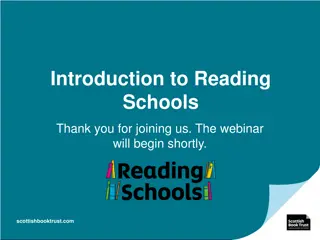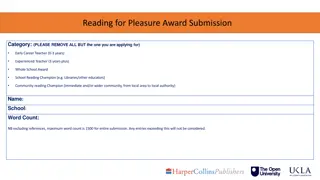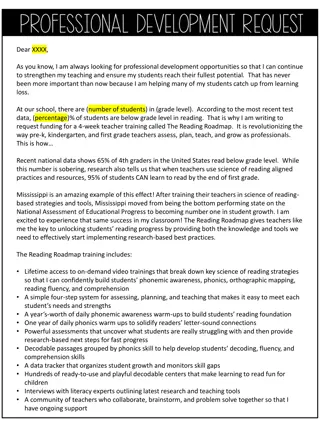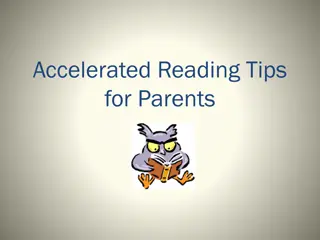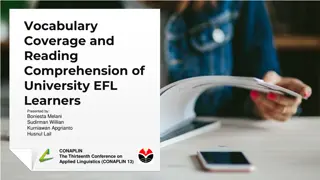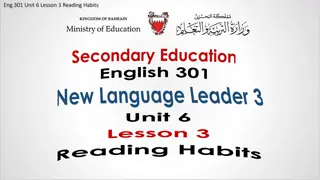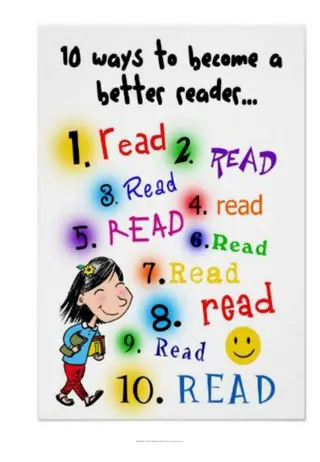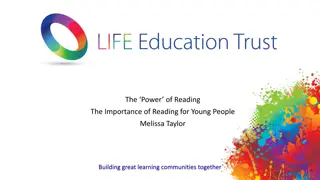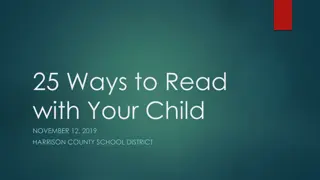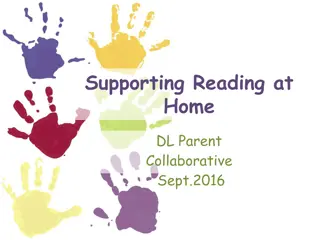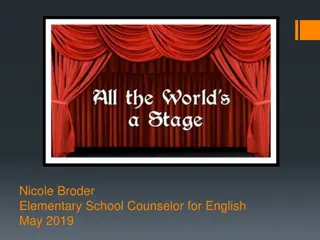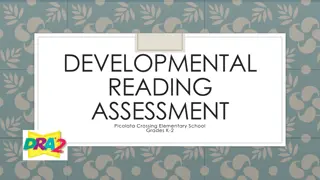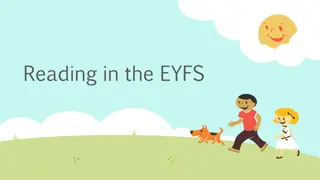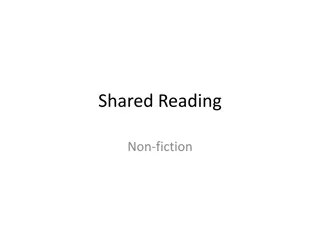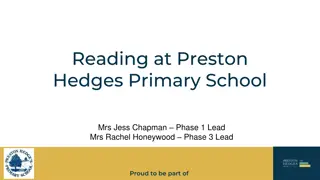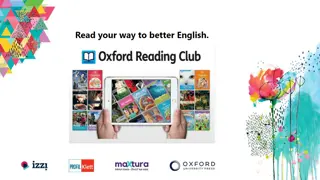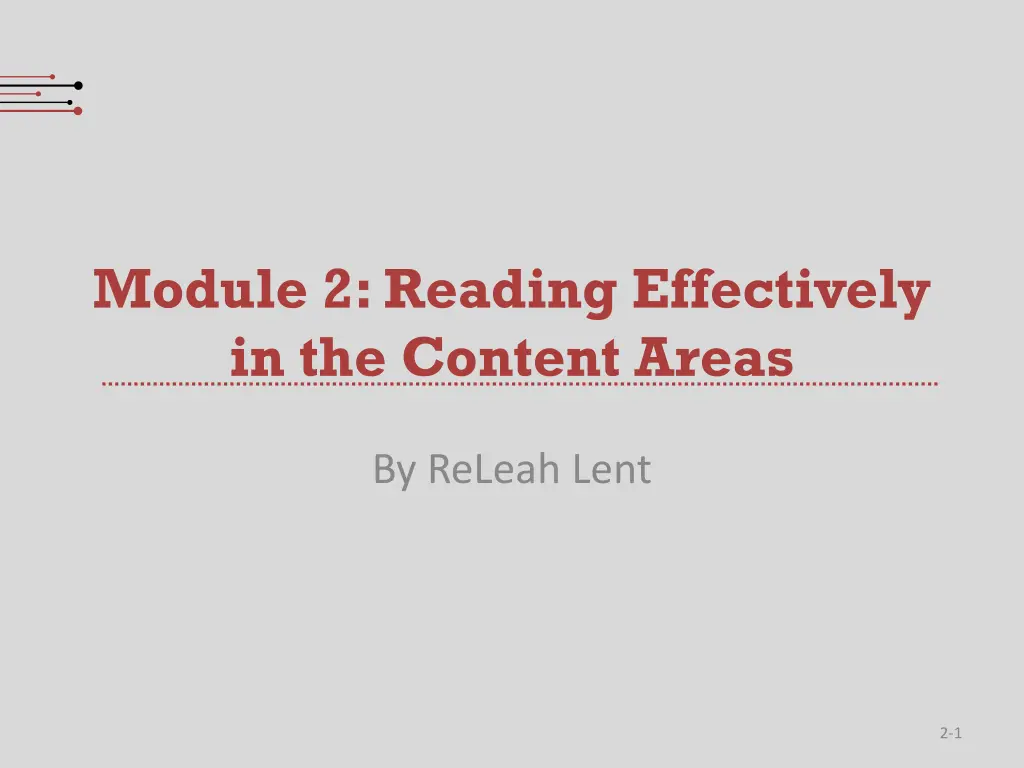
Effective Strategies for Engaging Content Area Reading
Explore effective instructional practices for choosing authentic, engaging texts to help students construct deep knowledge in every discipline. Discover five paths to authentic reading, including current events, short takes, read-alouds, visual reading, blog reading, and collaborative reading of challenging texts.
Download Presentation

Please find below an Image/Link to download the presentation.
The content on the website is provided AS IS for your information and personal use only. It may not be sold, licensed, or shared on other websites without obtaining consent from the author. If you encounter any issues during the download, it is possible that the publisher has removed the file from their server.
You are allowed to download the files provided on this website for personal or commercial use, subject to the condition that they are used lawfully. All files are the property of their respective owners.
The content on the website is provided AS IS for your information and personal use only. It may not be sold, licensed, or shared on other websites without obtaining consent from the author.
E N D
Presentation Transcript
Module 2: Reading Effectively in the Content Areas By ReLeah Lent 2-1
Bring It Back Activity Find a partner with whom to share your thinking around the text you have chosen to use in your classroom. You will each talk 2 minutes. Discuss these points: What makes this text an authentic choice for yourstudents? What will make this text engaging to your students? How will this text build your students complex knowledge of your content area? Which reading habits of experts in your field will students use when reading this text? 2-2
Reflection Take a minute to reflect on the experience of finding a text to use in your classroom. What were the biggest challenges in finding an authentic, engaging text to use with your students? 2-3
Objectives for This Session Participants will: reflect on the experience of choosing a text to use in the classroom. explore five instructional practices that are effective tools in helping students construct deep knowledge through the reading of engaging, authentic texts in every discipline. 2-4
Five Paths to Authentic Reading Current Events Short Takes Read-Alouds Reading Visually Blog Reading Collaborative Reading of Challenging Texts 2-5
Current Event Short Takes Current event short takes increase relevance interest learning 2-6
Reflecting on Sample Texts With the texts just shown you in mind, reflect on this question: How might texts like these make my content area seem more interesting and relevant to my students? 2-7
How to Incorporate Current Event Short Takes Use them to begin class each day to capture students interest and focus them on your content area. Use them to introduce a lesson. Create reading breaks during the lesson to recapture attention and encourage engagement. Provide links to articles students can read during independent reading time or when students have finished their work. 2-8
How to Incorporate Current Events Short Takes Place students in small groups and have one group member each day responsible for breaking in a current event the group can discuss. Choose a longer article with parts and read one part a day for the week. Provide one article a week for everyone to read and discuss. 2-9
Reflection What was the last text you read aloud to your students? What was your purpose for reading it? 2-10
Read-Alouds Read aloud to your students regularly from sources such as journals, novels, nonfiction, blogs, and commentaries to engage your students with your discipline. students need to hear how experts in the field communicate especially when text is too challenging for readers to access on their own. ReLeah Lent 2-11
How to Read Aloud (from Releah Lent) Read slowly and with as much showmanship as you possess. Sprinkle in your own thoughts about the content as you read. Have students jot questions in their learning logs for later discussion. Stop periodically to ask questions about the content. Model how you might disagree with the author or questions facts or sources. 2-12
How to Read Aloud (from ReLeah Lent) Stop often to have students turn and talk. You may want to project visuals or the complete text while reading. Provide links to online sources so students can access the text later. Try not to turn a read-aloud into an assignment; instead, approach it as a bonus something enjoyable that you are sharing. ReLeah Lent 2-13
Reading Visually Visual literacy is important because we know that nonlinguistic representations of a concept, especially when paired with print, can increase students ability to learn. --Releah Lent Teach your students how to read Infographics Charts Graphs Political Cartoons Photographs Illustrations 2-14
Reflection Think about this question: How did the questions help guide your understanding of the visual? 2-15
Reading Blogs a blog s major function is to communicate with other web users around the world for the purpose of informing interacting with or persuading a large number of people. ReLeah Lent 2-16
Ideas for Using Blogs in the Classroom Read blogs reflecting two different opinions about the same topic and have students list the points on each side. Have students evaluate blogs on credibility and impartiality. Use blogs to help students understand author s message. Have students write a response to one blog a week in their learning logs. 2-17
Collaborative Close Reading of Challenging Text Text selection is crucial. The text must be short challenging complex enough to engage students over multiple readings Students will work with partners or in groups to comprehend and derive meaning from the text. 2-18
Bring It Back Task Read the second half of Chapter 2 in This Is Disciplinary Literacy, pp. 33 58 (Beginning with How to Get Students Reading in Every Discipline Every Day to end of chapter) to deepen your understanding of what we discussed today. Choose ONE of the ideas we explored today for reading in the content areas and include it in a lesson between now and the next time we meet. Be prepared to talk with a partner about the celebrations and challenges of your experience. 2-19

